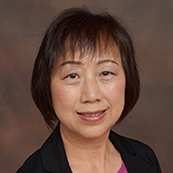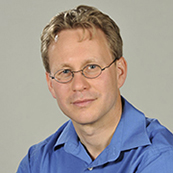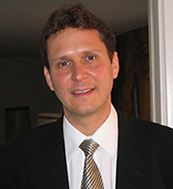Digital Photography and Mobile Imaging XIII Conference Program
Monday January 30, 2017
Camera Arrays and RGB-D Imaging Algorithms
Session Chairs:
Francisco Imai, Canon U.S.A. Inc., and Kevin Matherson, Microsoft Corporation (United States)
8:50 – 10:10 AM
Grand Peninsula Ballroom A
8:50DPMI-063
Stabilized high-speed video from camera arrays, Maha El Choubassi and Oscar Nestares, Intel Corporation (United States)
9:10DPMI-064
Panoramic background estimation from RGB-D videos, Christos Bampis1, Gowri Somanath2, Oscar Nestares2, and Jiajie Yao3; 1The University of Texas at Austin (United States), 2Intel Labs, Intel Corporation (United States), and 3Intel Corporation (China)
9:30DPMI-065
Accurate measurement of point to point distances in 3D camera images, Kalpana Seshadrinathan, Oscar Nestares, and Yi Wu, Intel Corporation (United States)
9:50DPMI-066
A novel framework for fast MRF optimization, Gowri Somanath, Jiajie Yao, and Yong Jiang, Intel Corporation (United States)
10:10 – 10:50 AM Coffee Break
KEYNOTE: Heterogeneous Computational Imaging
Session Chair: Michael Kriss, MAK Consultants (United States)
10:50 – 11:30 AM
Grand Peninsula Ballroom A
DPMI-067
Heterogeneous computational imaging, Kari Pulli, Intel Corporation (United States)
 Kari Pulli is a Senior Principal Engineer at Intel Corporation, working as the CTO of the Imaging and Camera Technologies Group. He has a long history in Computational Photography, Computer Vision, and Computer Graphics (earlier jobs include VP of Computational Imaging at Light, Sr. Director at NVIDIA Research, Nokia Fellow), with numerous publications (h-index = 30). Pulli has a PhD from the University of Washington, Seattle. He has also been a researcher / lecturer at Stanford, MIT, and University of Oulu. He has contributed to many multimedia standards at the Khronos Group, including OpenVX, and is a regular speaker and contributor at SIGGRAPH, CVPR, and many other conferences. Kari Pulli is a Senior Principal Engineer at Intel Corporation, working as the CTO of the Imaging and Camera Technologies Group. He has a long history in Computational Photography, Computer Vision, and Computer Graphics (earlier jobs include VP of Computational Imaging at Light, Sr. Director at NVIDIA Research, Nokia Fellow), with numerous publications (h-index = 30). Pulli has a PhD from the University of Washington, Seattle. He has also been a researcher / lecturer at Stanford, MIT, and University of Oulu. He has contributed to many multimedia standards at the Khronos Group, including OpenVX, and is a regular speaker and contributor at SIGGRAPH, CVPR, and many other conferences. |
Emerging Architectures and Systems
Session Chair:
Michael Kriss, MAK Consultants (United States)
11:30 AM – 12:30 PM
Grand Peninsula Ballroom A
11:30DPMI-068
Is there a multi-camera future? (Invited), Timothy Macmillan, Consultant (United States)
11:50DPMI-069
Capturing light field video for 6-DOF VR playback (Invited), William Jiang, Lytro Inc. (United States)
12:10DPMI-070
Representation and compression for cinematic VR (Invited), Hari Lakshman, Dolby Labs (United States)
12:30 – 2:00 PM Lunch Break
EI 2017 Opening Plenary and Symposium Awards
Session Chairs: Joyce E. Farrell, Stanford University, and Nitin Sampat, Rochester Institute of Technology (United States)
2:00 – 3:00 PM
Grand Peninsula Ballroom D
Giga-scale 3D computational microscopy, Laura Waller, University of California, Berkeley (United States)
Laura Waller is the Ted Van Duzer Endowed Assistant Professor of Electrical Engineering and Computer Sciences (EECS) at UC Berkeley. She is a Senior Fellow at the Berkeley Institute of Data Science, and received her BS (2004), MEng (2005), and PhD (2010) in EECS from the Massachusetts Institute of Technology (MIT). Waller's talk is on computational imaging methods for fast capture of gigapixel-scale 3D intensity and phase images in a commercial microscope that employs illumination-side and detection-side coding of angle (Fourier) space with simple hardware and fast acquisition. The result is high-resolution reconstructions across a large field-of-view, achieving high space-bandwith-time product.
3:00 – 3:30 PM Coffee Break
Imaging System Assessment
Session Chairs:
Joyce Farrell, Stanford University, and Bo Mu, BAE Systems Imaging Solutions (United States)
3:30 – 4:50 PM
Grand Peninsula Ballroom A
3:30DPMI-071
Quantifying the luminance ratio of interior and exterior scenes: Challenges and tradeoffs in definitions, current standards, measurement methodologies and instrumentation, capturing capabilities of digital cameras, effects of veiling glare, Fernando Voltolini de Azambuja, Nitin Sampat, and Stephen Viggiano, Rochester Institute of Technology (United States)
3:50DPMI-072
Sensitivity analysis applied to ISO recommended camera color calibration methods to determine how much of an advantage, if any, does spectral characterization of the camera offer over the chart-based approach, Nitin Sampat, Stephen Viggiano, and Keith Borrino, Rochester Institute of Technology (United States)
4:10DPMI-073
Perceptual optimization driven by image quality metrics (Invited), Zhou Wang, University of Waterloo (Canada)
4:30DPMI-074
Looming challenges in mobile imaging quality: New technologies and new markets (Invited), David Cardinal, Cardinal Photo & Extremetech.com (United States)
5:00 – 6:00 PM All-Conference Welcome Reception, Atrium
Tuesday January 31, 2017
KEYNOTE: Mobile Device Camera IQ
Session Chairs: Susan Farnand, Rochester Institute of Technology, and Jackson Roland, Apple Inc. (United States)
8:50 – 9:20 AM
Grand Peninsula Ballroom A
This session is jointly sponsored by: Image Quality and System Performance XIV and Digital Photography and Mobile Imaging XIII.
IQSP-249
Towards the development of the IEEE P1858 CPIQ standard – A validation study, Elaine Jin1, Jonathan Phillips1, Susan Farnand2, Margaret Belska3, Vinh Tran3, Ed Chang1, Yixuan Wang3, and Benjamin Tseng4; 1Google Inc. (United States), 2Rochester Institute of Technology (United States), 3NVIDIA (United States), and 4Apkudo (Australia)
 Elaine W. Jin holds a PhD in optical engineering from Zhejiang University in China, and a PhD in psychology from the University of Chicago. She has worked in the imaging industry for 15+ years including employment at Polaroid Corporation, Eastman Kodak Company, Micron Technologies, Aptina Imaging, Marvell Semiconductors, and Intel Corporation. She currently is a staff image scientist at Google, working on developing cutting-edge consumer hardware products. Her primary research interests include imaging systems design and analysis, color imaging, and psychophysics. She has published 22 journal and conference papers, and authored 14 US patents / patent applications. She joined the CPIQ initiative (Camera Phone Image Quality) in 2006, and since then has made major contributions in the development of the softcopy quality ruler method, and the CPIQ metrics for visual noise, texture blur, spatial frequency responses, chroma level, and color uniformity. She currently leads the Color/Tone Subgroup of the IEEE CPIQ Standard Working Group. Elaine W. Jin holds a PhD in optical engineering from Zhejiang University in China, and a PhD in psychology from the University of Chicago. She has worked in the imaging industry for 15+ years including employment at Polaroid Corporation, Eastman Kodak Company, Micron Technologies, Aptina Imaging, Marvell Semiconductors, and Intel Corporation. She currently is a staff image scientist at Google, working on developing cutting-edge consumer hardware products. Her primary research interests include imaging systems design and analysis, color imaging, and psychophysics. She has published 22 journal and conference papers, and authored 14 US patents / patent applications. She joined the CPIQ initiative (Camera Phone Image Quality) in 2006, and since then has made major contributions in the development of the softcopy quality ruler method, and the CPIQ metrics for visual noise, texture blur, spatial frequency responses, chroma level, and color uniformity. She currently leads the Color/Tone Subgroup of the IEEE CPIQ Standard Working Group. |
Mobile Device Camera IQ
Session Chairs:
Susan Farnand, Rochester Institute of Technology, and Jackson Roland, Apple Inc. (United States)
9:20 – 10:20 AM
Grand Peninsula Ballroom A
This session is jointly sponsored by: Image Quality and System Performance XIV and Digital Photography and Mobile Imaging XIII.
9:20IQSP-250
A methodology for perceptual image quality assessment of smartphone cameras – Color quality, Susan Farnand1, Young Jang2, Lark Kwon Choi2, and Chuck Han2; 1Rochester Institute of Technology, and 2Qualcomm Inc. (United States)
9:40IQSP-251
Assessing the ability of simulated laboratory scenes to predict the image quality performance of HDR captures (and rendering) of exterior scenes using mobile phone cameras, Amelia Spooner1, Ashley Solter1, Fernando Voltolini de Azambuja1, Nitin Sampat1, Stephen Viggiano1, Brian Rodricks2, and Cheng Lu3; 1Rochester Institute of Technology, 2SensorSpace, LLC, and 3Intel Corporation (United States)
10:00DPMI-252
Cell phone rankings!, Dietmar Wueller, Image Engineering GmbH & Co. KG (Germany)
10:00 AM – 7:30 PM Industry Exhibition
10:20 – 10:50 AM Coffee Break
MTF
Session Chairs:
Peter Burns, Burns Digital Imaging, and Feng Li, GoPro Inc. (United States)
10:50 AM – 12:30 PM
Grand Peninsula Ballroom A
This session is jointly sponsored by: Image Quality and System Performance XIV and Digital Photography and Mobile Imaging XIII.
10:50IQSP-253
Characterization of entire imaging plane spatial frequency response, Victor Lenchenkov, Orit Skorka, Stan Micinski, and Radu Ispasoiu, ON Semiconductor (United States)
11:10IQSP-254
Reverse-projection method for measuring camera MTF, Stan Birchfield, Microsoft Corporation (United States)
11:30IQSP-255
Texture MTF from images of natural scenes, Riccardo Branca1, Sophie Triantaphillidou1, and Peter Burns2; 1University of Westminster (United Kingdom) and 2Burns Digital Imaging (United States)
11:50DPMI-256
Camera phone texture preservation measurements with modulation transfer function: An alternative approach for noise estimation of random texture chart images, Nitin Suresh1,2, Joshua Pfefer1, and Quanzeng Wang1; 1U.S. Food and Drug Administration and 2University of Maryland (United States)
12:10IQSP-257
The effects of misregistration on the dead leaves cross-correlation texture blur analysis, Ranga Burada1, Robert Sumner1, and Noah Kram2; 1Imatest, LLC and 2Rochester Institute of Technology (United States)
12:30 – 2:00 PM Lunch Break
EI 2017 Tuesday Plenary and Symposium Awards
Session Chairs: Joyce E. Farrell, Stanford University, and Nitin Sampat, Rochester Institute of Technology (United States)
2:00 – 3:00 PM
Grand Peninsula Ballroom D
VR 2.0: Making virtual reality better than reality, Gordon Wetzstein, Stanford University (United States)
Gordon Wetzstein is an Assistant Professor of Electrical Engineering and, by courtesy, of Computer Science, at Stanford University, and leads the Stanford Computational Imaging Group. He received a PhD in computer science from the University of British Columbia (2011) where his doctoral dissertation focused on computational light modulation for image acquisition and display. In his talk, Wetzstein explores the frontiers of VR systems engineering. Eventually, VR/AR systems will redefine communication, entertainment, education, collaborative work, simulation, training, telesurgery, and basic vision research, as next-generation computational near-eye displays evolve to deliver visual experiences that are better than the real world.
3:00 – 3:30 PM Coffee Break
Image Interpolation, Restoration, and Denoising
Session Chairs:
Karen Egiazarian, Tampere University of Technology (Finland), and Radka Tezaur, Intel Corporation (United States)
3:30 – 5:30 PM
Grand Peninsula Ballroom A
This session is jointly sponsored by: Digital Photography and Mobile Imaging XIII and Image Processing: Algorithms and Systems XV.
3:30DPMI-083
BM3D-HVS: Content-adaptive denoising for improved visual quality (Invited), Karen Egiazarian1,2, Aram Danielyan2, Nikolay Ponomarenko1,2, Alessandro Foi1,2, Oleg Ieremeiev3, and Vladimir Lukin3; 1Tampere University of Technology (Finland), 2Noiseless Imaging Oy (Finland), and 3National Aerospace University (Ukraine)
3:50IPAS-084
Refining raw pixel values using a value error model to drive texture synthesis, Henry Dietz, University of Kentucky (United States)
4:10IPAS-085
Color interpolation based on colorization for RGB-white color filter array, Paul Oh1, Sukho Lee2, and Moon Gi Kang1; 1Yonsei University and 2Dongseo University (Republic of Korea)
4:30IPAS-086
Video frame synthesizing method for HDR video capturing system with four image sensors, Takayuki Yamashita1,2 and Yoshihiro Fujita1; 1Ehime University and 2NHK (Japan)
4:50DPMI-088
Robust defect pixel detection and correction for Bayer Imaging Systems, Noha El-Yamany, Intel Corporation (Finland)
5:30 – 7:30 PM Symposium Demonstration Session, Grand Peninsula Ballroom E
Wednesday February 1, 2017
KEYNOTE: Bayer Pattern and Image Quality
Session Chairs: Kevin Matherson, Microsoft Corporation (United States), and Dietmar Wueller, Image Engineering GmbH & Co. KG (Germany)
8:50 – 9:30 AM
Grand Peninsula Ballroom A
This session is jointly sponsored by: Image Sensors and Imaging Systems 2017 and Digital Photography and Mobile Imaging XIII.
Conference Chair Opening Remarks
IMSE-077
Bayer pattern and image quality, Jörg Kunze, Basler AG (Germany)
 Jörg Kunze has received his PhD in physics from the University of Hamburg (2004). He joined Basler in 1998, where he started as an electronics developer and where he currently is the team leader of New Technology. Kunze serves as an expert for image sensors, camera hardware, noise, color fidelity, 3D- and computational imaging and develops new algorithms for color image signal processing. The majority of the Basler patents name him as inventor. Jörg Kunze has received his PhD in physics from the University of Hamburg (2004). He joined Basler in 1998, where he started as an electronics developer and where he currently is the team leader of New Technology. Kunze serves as an expert for image sensors, camera hardware, noise, color fidelity, 3D- and computational imaging and develops new algorithms for color image signal processing. The majority of the Basler patents name him as inventor. |
Input Signal Quality & Characterization
Session Chairs:
Kevin Matherson, Microsoft Corporation (United States), and Dietmar Wueller, Image Engineering GmbH & Co. KG (Germany)
9:30 – 10:10 AM
Grand Peninsula Ballroom A
This session is jointly sponsored by: Image Sensors and Imaging Systems 2017 and Digital Photography and Mobile Imaging XIII.
9:30IMSE-078
Accurate joint geometric camera calibration of visible and far-infrared cameras, Takashi Shibata1,2, Masayuki Tanaka1, and Masatoshi Okutomi1; 1Tokyo Institute of Technology and 2NEC Corporation (Japan)
9:50DPMI-079
Interferometric measurement of sensor MTF and crosstalk, Todor Georgiev, Jennifer Gille, Amber Sun, Lyubomir Baev, and Tharun Battula, Qualcomm Technologies, Inc. (United States)
10:00 AM – 4:00 PM Industry Exhibition
10:10 – 10:50 AM Coffee Break
KEYNOTE: Silicon Retina Technology
Session Chairs: Thomas Vogelsang, Rambus Inc., and Ralf Widenhorn, Portland State University (United States)
10:50 – 11:30 AM
Grand Peninsula Ballroom A
This session is jointly sponsored by: Image Sensors and Imaging Systems 2017 and Digital Photography and Mobile Imaging XIII.
DPMI-080
Silicon retina technology (Invited), Tobi Delbruck, Institute for Neuroinformatics (INI) (Switzerland)
 Tobi Delbruck (IEEE M'99-SM'06-F'13) received a PhD from Caltech (1993). He is currently a professor of physics and electrical engineering at ETH Zurich in the Institute of Neuroinformatics, University of Zurich and ETH Zurich, Switzerland, where he has been since 1998. His group, which he coordinates together with Shih-Chii Liu, focuses on neuromorphic event-based sensors and sensory processing. He has co-organized the Telluride Neuromorphic Cognition Engineering summer workshop and the live demonstration sessions at ISCAS and NIPS. Delbruck is past Chair of the IEEE CAS Sensory Systems Technical Committee. He worked on electronic imaging at Arithmos, Synaptics, National Semiconductor, and Foveon and has founded 3 spin-off companies, including inilabs.com, a non-for-profit organization that has distributed hundreds of R&D prototype neuromorphic sensors to more than a hundred organizations around the world. He has been awarded 9 IEEE awards. Tobi Delbruck (IEEE M'99-SM'06-F'13) received a PhD from Caltech (1993). He is currently a professor of physics and electrical engineering at ETH Zurich in the Institute of Neuroinformatics, University of Zurich and ETH Zurich, Switzerland, where he has been since 1998. His group, which he coordinates together with Shih-Chii Liu, focuses on neuromorphic event-based sensors and sensory processing. He has co-organized the Telluride Neuromorphic Cognition Engineering summer workshop and the live demonstration sessions at ISCAS and NIPS. Delbruck is past Chair of the IEEE CAS Sensory Systems Technical Committee. He worked on electronic imaging at Arithmos, Synaptics, National Semiconductor, and Foveon and has founded 3 spin-off companies, including inilabs.com, a non-for-profit organization that has distributed hundreds of R&D prototype neuromorphic sensors to more than a hundred organizations around the world. He has been awarded 9 IEEE awards. |
Emerging Imaging Sensor & Hardware
Session Chairs:
Thomas Vogelsang, Rambus Inc., and Ralf Widenhorn, Portland State University (United States)
11:30 – 11:50 AM
Grand Peninsula Ballroom A
This session is jointly sponsored by: Image Sensors and Imaging Systems 2017 and Digital Photography and Mobile Imaging XIII.
11:30DPMI-081
TIK: A time domain continuous imaging testbed using conventional still images and video, Henry Dietz, John Fike, Paul Eberhart, Katie Long, Clark Demaree, and Jong Wu, University of Kentucky (United States)
KEYNOTE: CMOS image sensor pixel design and optimization
Session Chairs: Thomas Vogelsang, Rambus Inc., and Ralf Widenhorn, Portland State University (United States)
11:50 AM – 12:40 PM
Grand Peninsula Ballroom A
This session is jointly sponsored by: Image Sensors and Imaging Systems 2017 and Digital Photography and Mobile Imaging XIII.
IMSE-082
CMOS image sensor pixel design and optimization, Boyd Fowler, OmniVision Technologies (United States)
 Boyd Fowler's research interests include CMOS image sensors, low noise image sensors, noise analysis, data compression, and machine learning and vision. He received his MSEE (1990) and PhD (1995) from Stanford University. After finishing his PhD he stayed at Stanford University as a research associate in the Electrical Engineering Information Systems Laboratory until 1998. In 1998, Fowler founded Pixel Devices International in Sunnyvale California. Between 2005 and 2013, Fowler was CTO and VP of Technology at Fairchild Imaging. He is currently at OmniVision Technologies leading the marketing department. Fowler has authored numerous technical papers, book chapters and patents. Boyd Fowler's research interests include CMOS image sensors, low noise image sensors, noise analysis, data compression, and machine learning and vision. He received his MSEE (1990) and PhD (1995) from Stanford University. After finishing his PhD he stayed at Stanford University as a research associate in the Electrical Engineering Information Systems Laboratory until 1998. In 1998, Fowler founded Pixel Devices International in Sunnyvale California. Between 2005 and 2013, Fowler was CTO and VP of Technology at Fairchild Imaging. He is currently at OmniVision Technologies leading the marketing department. Fowler has authored numerous technical papers, book chapters and patents. |
Image Sensors and Imaging Systems 2017 Awards
12:40 – 2:00 PM Lunch Break
EI 2017 Wednesday Plenary and Symposium Awards
Session Chairs: Joyce E. Farrell, Stanford University, and Nitin Sampat, Rochester Institute of Technology (United States)
2:00 – 3:00 PM
Grand Peninsula Ballroom D
Designing VR video camera systems, Brian Cabral, Facebook, Inc. (United States)
Brian Cabral is Director of Engineering at Facebook, leading the Surround 360 VR camera team, specializing in computational photography, computer vision, and computer graphics. He has published a number of papers in the area of computer graphics and imaging including the pioneering Line Integral Convolution algorithm. Cabral discusses developing Facebook Surround 360, an open, high-quality 3D-360 video capture system. VR video capture systems are composed of multiple optical and digital components - all of which must operate as if they are one seamless optical system. The design of VR video cameras, optical choices, SNR, etc., require a new set of technologies and engineering approaches, with tight coupling to the computational system components.
3:00 – 3:30 PM Coffee Break
Digital Photography and Mobile Imaging XIII Interactive Papers Session
5:30 – 7:00 PM
Atrium
The following works will be presented at the EI 2017 Symposium Interactive Papers Session.
DPMI-075
A Canon hack development kit implementation of time domain continuous imaging, Katie Long, Clark Demaree, and Henry Dietz, University of Kentucky (United States)
DPMI-076
Advanced HDR fusion method for image sensor with variable pixel exposure, Timofey Uvarov, OmniVision Technologies, Inc. (United States)